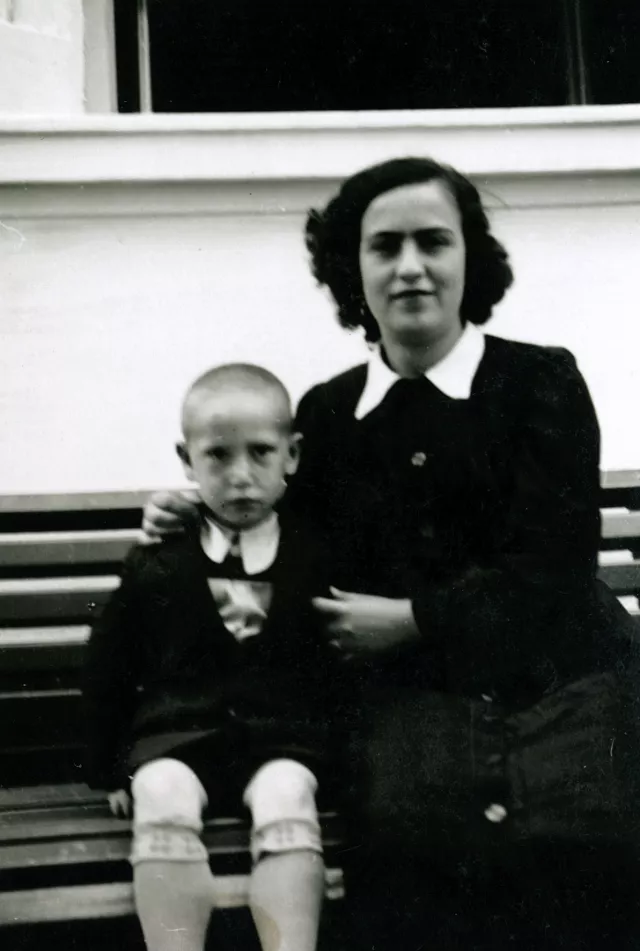Nisim Navon's aunt Sarina Navon with her child Jakov in front of Nisim's grandparents' house
Jakov Navon and his mother Serina Navon, my uncle's wife, in front of my grandparents? house in Pristina. Jakov has very short hair in this picture. I remember that it was the custom that young children would have their hair very short for hygienic reasons. My father used to take me to the barber at the end of every school year to have my hair shaved off.
My family did not travel much, except to natural springs, banja, in the region, during the summer holidays, a few times before the war. Our childhood was mostly spent at home. The lack of running water and electricity, and the long, cold winters, meant that there were a lot of household chores to keep us busy.
Like many people in Pristina at the time, we had a Turkish-speaking maid who came to our house every day, so we also spoke Turkish as children. At home, we spoke Ladino, and in school, Serbo-Croatian.
The only synagogue was in the center of the town, and most of the Jewish community lived within walking distance. The synagogue was not large, but it could hold all the Jews. The women sat in a slightly raised section behind the men. The mehitza (barrier between women and men) was a wooden latticework trellis. Because of it, the women could see the men, but the men could not see the women. The prayer books and service were all in Hebrew, except for those prayers that were in Ladino. Everyone could follow the service and all the males knew how to participate.
The rabbi, Zaharija Levi, also served as the chazzan (cantor). He had such a beautiful voice. The services currently led in Belgrade by Rabbi Isak Asiel remind me very of much those I remember from my childhood. Rabbi Asiel has a similar accent and uses the same melodies that we used in Pristina back in our time. Before the war there was a daily minyan (prayer quorum) but I am not sure how many services there were a day. Our mother's father, unlike our father, went to synagogue every day. The rabbi lived in a house in the yard. There was also a building in the yard that belonged to the community. The first floor was used as a classroom and the upper floor had a hall that was used for community celebrations and meetings. In the yard there was a section where the rabbi slaughtered poultry and behind the rabbi's house there was a place where the chevra kadisha (burial society) stored their materials. No social events were held in the synagogue.

















